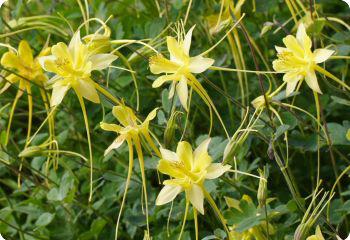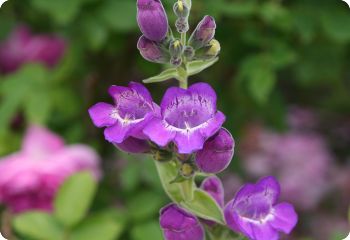Germinating Difficult Seeds
by Diane Linsley
Are you having trouble germinating difficult seeds? Try these tricks to improve your germination rates.
Soaking Seeds
Some seeds take a long time to absorb the water they need to germinate. This process is speeded up by soaking them in water overnight. Don't soak seeds for more than 24 hours, unless specifically recommended on the packet.
Nicking or Scarifying Seeds
Some seeds like morning glory and sweet pea have hard seed coats that block water from entering the embryo. To speed germination, make a tiny hole in the seed coat. Some people recommend doing this by nicking the seed with a knife, but I prefer to use fingernail clippers, which are much safer. Alternatively, you can scarify the seed by rubbing it against a piece of sandpaper.
Be careful not to damage the embryo by nicking too deeply or by removing too much of the seed coat. Scarify or nick the seed on a side away from the growing point. The growing point is the pointy tip on one end of the seed. So you'll want to nick the seed on one of the other sides.
A percentage of the seeds may sprout without nicking. If you don't want to nick all of them, just soak them overnight, then plant the ones that swell up. You can nick the remaining seeds and soak them again.
Refrigerating, Pre-chilling or Stratifying Seeds
Some seeds like penstemon and columbine germinate best after a period of cold-moist stratification, which simulates the winter season. The simplest way to stratify seeds is to sow them into pots of moistened seedling mix, cover with plastic, and place them in the fridge for the recommended amount of time.
If fridge space is limited, try this method: Place seeds in a paper napkin, then fold it and moisten with tap water. It shouldn't be too wet, just damp. Place the napkin in a ziploc bag, and put it in the fridge. After the recommended amount of time, remove the seeds from the fridge and pot them up.
This method won't work for very tiny seeds, which are difficult to handle individually. You can try stratifying tiny seeds in a bag with moist peat moss, which can then be scattered over the surface of the soil. The only drawback to this method is you can't tell how thickly you are sowing the seeds. That's why I prefer to refrigerate the pots or flats.
After stratification if finished, place the seed flats in a sunny window or under lights for germination.
Alternating Temperatures
Some seeds like Allium 'Purple Sensation' and Eryngium giganteum need a long period of cold-moist stratification with alternating temperatures. These are the most difficult seeds to germinate.
It's best to sow these seeds outdoors in the fall and let nature work on them. They can be direct sown in the garden, or they can be sown in pots and kept in a cold frame or a protected location like the north side of the house. Check the pots frequently, and add enough water to keep them moist but not soggy.
When in doubt, experiment with different germination methods. Then you'll know what works best the next time around.
Related Articles
Starting Seeds Indoors - Starting annual and perennial seeds indoors.
Self-Sowing Annuals - Flowers that reseed and come back every year.
First-Year Flowering Perennials - Plants that bloom the first year from seed.
Seeds

